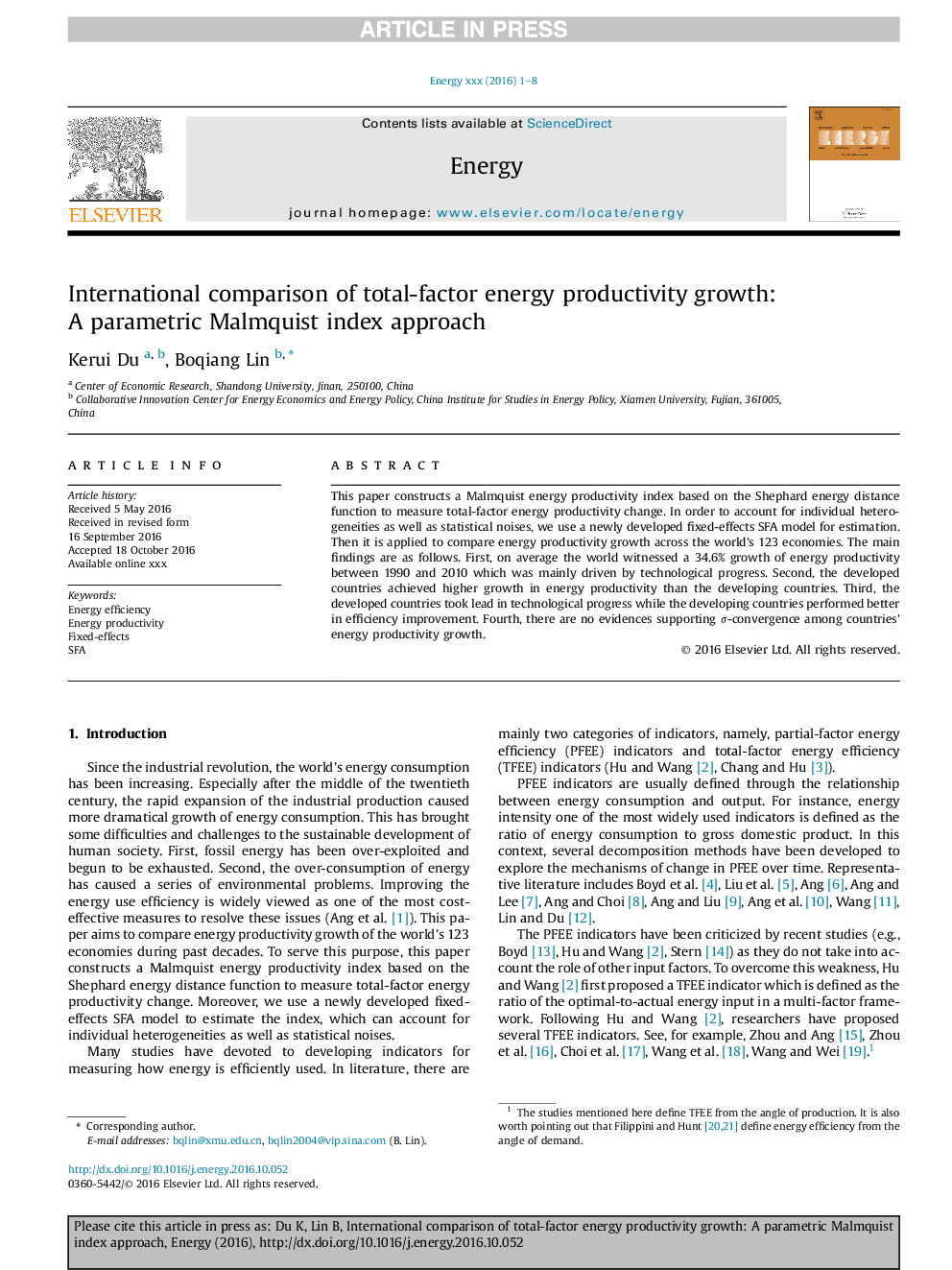| Article ID | Journal | Published Year | Pages | File Type |
|---|---|---|---|---|
| 5477077 | Energy | 2017 | 8 Pages |
Abstract
This paper constructs a Malmquist energy productivity index based on the Shephard energy distance function to measure total-factor energy productivity change. In order to account for individual heterogeneities as well as statistical noises, we use a newly developed fixed-effects SFA model for estimation. Then it is applied to compare energy productivity growth across the world's 123 economies. The main findings are as follows. First, on average the world witnessed a 34.6% growth of energy productivity between 1990 and 2010 which was mainly driven by technological progress. Second, the developed countries achieved higher growth in energy productivity than the developing countries. Third, the developed countries took lead in technological progress while the developing countries performed better in efficiency improvement. Fourth, there are no evidences supporting Ï-convergence among countries' energy productivity growth.
Related Topics
Physical Sciences and Engineering
Energy
Energy (General)
Authors
Kerui Du, Boqiang Lin,
